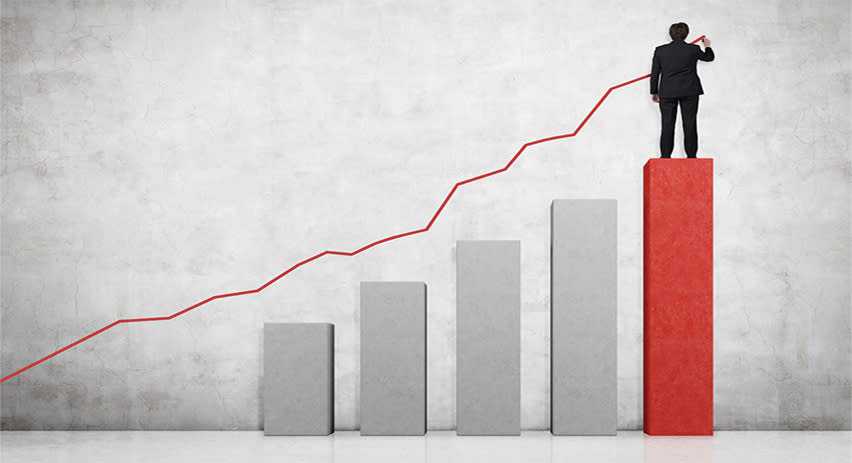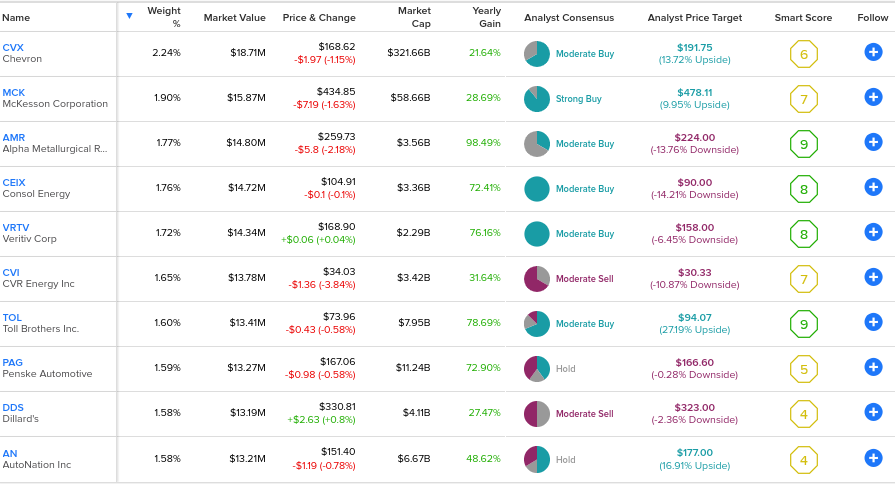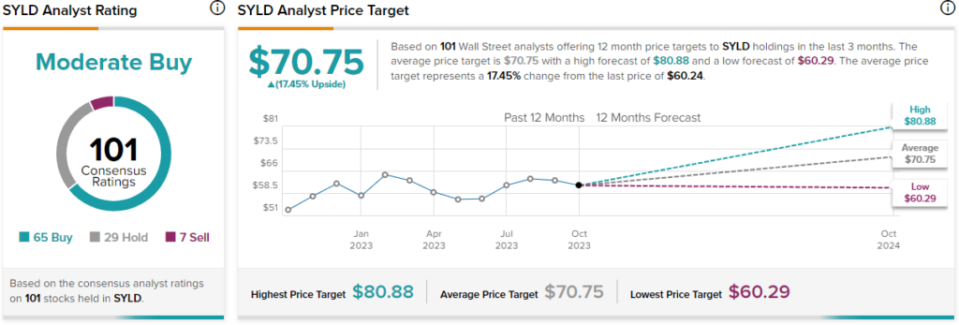SYLD: A ‘Shareholder Yield’ ETF Returning 24% Per Year
What if I told you that there’s a red-hot ETF out there that has returned 24% on an annualized basis over the past three years — and it’s not a tech fund? In fact, it’s a fund focused on simple, old-fashioned concepts like shareholder yield. It’s the Cambria Shareholder Yield ETF (BATS:SYLD).
The fund’s recent success shows that focusing on these fundamentals still has value in today’s market. Therefore, let’s take a closer look at SYLD and see if it’s worth investor consideration.
What is the SYLD ETF’s Strategy?
According to SYLD’s sponsor, Cambria, the fund “focuses on U.S. companies that are returning cash to shareholders through three attributes – dividends, buybacks, and net debt reduction.”
The fund prioritizes shareholder yield — how much money a company returns to shareholders in the form of dividends, share buybacks, and debt paydown. Shareholder yield is calculated by adding up cash dividends, net share repurchases, and net debt reduction and then dividing this total by a company’s market cap. In theory, high shareholder yield is a sign that a company is operating efficiently, putting it in a position to generate these returns to shareholders.
Please note that the fund is actively managed and switched over to active management three years ago.
SYLD’s Holdings
To construct its portfolio, SYLD starts with a universe of 3,000 stocks with market caps of over $200 million that meet certain liquidity and price requirements.
Cambria then selects the top 20% of these stocks based on their shareholder yields and valuations. Cambria’s portfolio management team then evaluates these stocks to find equities that it feels are trading below their intrinsic value based on metrics like the price-to-earnings ratio and the price-to-free-cash-flow ratio. Next, the team selects what they feel are the top 100 of these stocks based on shareholder yield and valuation. The fund rebalances quarterly and seeks to equally weight the 100 stocks it invests in.
What does this process look like in practice? SYLD’s strategy results in a portfolio of 100 stocks. The fund is very diversified in that its top 10 holdings account for just 17.4% of assets.
Below, you’ll find an overview of SYLD’s top 10 holdings using TipRanks’ holdings tool.
SYLD’s top holdings consist of companies that are returning plenty of capital to shareholders. The fund’s top holding, Chevron, is emblematic of the types of stocks that SYLD targets. Chevron features a 3.5% dividend yield and returns a lot of capital to shareholders via share buybacks.
Beyond Chevron, the energy sector is featured prominently through other energy supermajors like ExxonMobil and ConocoPhillips, coal stocks like Alpha Metallurgical Resources and Consol Energy, and petroleum refiner and nitrogen fertilizer manufacturer CVR Energy.
In recent years, many energy companies have become increasingly diligent about rewarding their shareholders with shareholder returns, as the market isn’t necessarily looking for them to ramp up production for the sake of growth.
Interestingly, auto and truck dealerships are well-represented in the ETF’s top holdings by Penske Automotive and AutoNation. Beyond these names, SYLD owns all types of businesses that generate high shareholder yields, ranging from homebuilders like Toll Brothers and Pultegroup to retailers like Dillard’s.
Monster Performance
While this may not sound like the most exciting group of holdings, this portfolio has propelled SYLD to phenomenal returns over time, and there’s nothing boring about that.
Over the past three years (as of August 31, 2023), the fund has put up a red-hot annualized return of 24%, far surpassing the returns of the broader market. For comparison, the SPDR S&P 500 ETF Trust returned 10.4% over the same time frame.
Over the past five years, SYLD’s annualized return stands at 12.1%, beating SPY’s return of 11%. Over a 10-year time frame, SYLD’s annualized return comes in at 12.5%, slightly trailing SPY’s 12.7% return, although, in reality, this is a great 10-year annualized return.
Expense Ratio
The only negative aspect of SYLD is its relatively high expense ratio of 0.59%. This means that an investor allocating $10,000 to SYLD will pay $59 in fees during the first year of investing. These fees compound over time. Assuming the expense ratio remains constant and the fund returns 5% a year going forward, this same investor would pay $189 in fees over three years, $329 over five years, and $737 over the course of 10 years.
In fairness to SYLD, it’s an actively-managed fund, so it’s naturally going to be more expensive than the typical index fund. Plus, its returns over the last few years seem to justify its high fee. If SYLD keeps posting dynamite annualized returns, the higher expense ratio isn’t going to be a big concern, but if the fund’s returns decelerate, this expense ratio will be a tougher pill to swallow.
Dividend Yield
SYLD focuses on stocks that return capital to shareholders, and the fund itself is a dividend payer that currently yields 2.5%. While this yield not be enough to get the hearts of income investors racing, it’s a nice bonus for investors and helps boost total returns over time.
Is SYLD Stock a Buy, According to Analysts?
Turning to Wall Street, SYLD earns a Moderate Buy consensus rating based on 65 Buys, 29 Holds, and seven Sell ratings assigned in the past three months. The average SYLD stock price target of $70.75 implies 17.45% upside potential.
Investor Takeaway
SYLD is an attractive ETF with a unique focus on shareholder yield. This ETF has crushed the market over the past three years and put up impressive returns over the past five and 10 years as well. While past performance is no guarantee of future results, SYLD’s strategy seems sound and sustainable. Returning 24% per year for a prolonged timeframe probably isn’t sustainable, but the fund should continue to do well over time.
Investors have to decide if the fund’s relatively high expense ratio, due to its smaller size (with $835 million in assets under management) and active management style, is right for them. But overall, SYLD looks like an attractive investment for investors to add to their portfolios.
Disclosure: At the time of publication the writer had a position in the securities mentioned in this article.



